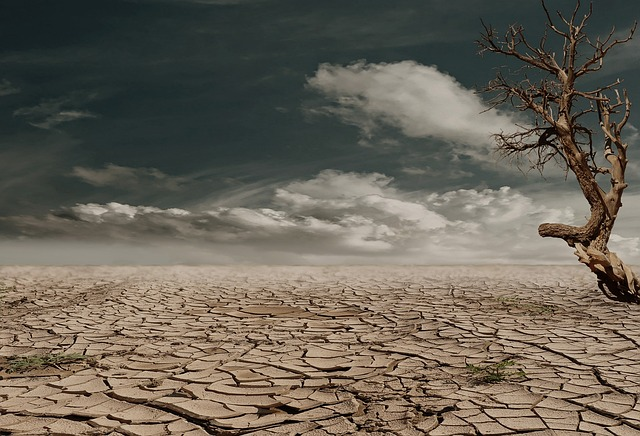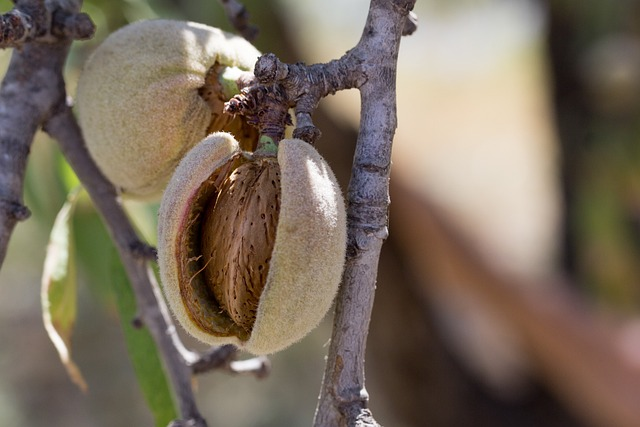
Is almond milk bad for the environment? Many people believe that it is, but the truth may surprise you. While almonds do require a lot of water to grow, they are actually a relatively sustainable crop. This blog post will explore the environmental impact of almond milk production and dispel some of the myths about this popular plant-based beverage.
The debate surrounding almond milk and its sustainability has been gaining increasing attention

Almonds can take a large amount of water to farm, which has been especially prominent in California. Some people are opposed to the water usage challenges Californian almond farmers face, because the state is prone to drought. While other believe that water efficient farming practices can negate any water waste implications. Further research will be necessary to better understand the water usage of almonds and the sustainability concerns that are associated with growing this crop.
Almond milk production has some benefits over dairy milk production, but there are some drawbacks
One of the positives about producing almond milk is that it does not use up as many resources as dairy milk does. As dairy cows require food and water far more regularly than almond trees do, almond milk production requires significantly less water, land and energy to operate. Additionally, the production of almond milk often supports entire farms that grow sustainable products rather than the polluting dairy industry. On the other hand, the negatives associated with almond milk production are mainly related to its environmental impact. Growing almond trees needs far more chemical inputs than dairy cows do in order to remain healthy and protect against pests, meaning an increase in carbon emissions and the potential for toxic runoff reaching local water supplies. Overall, there are pros and cons to both dairy milk and almond milk production which need to be taken into account before coming to a decision on what type of dairy alternative you wish to consume.
Almond milk is becoming an increasingly popular non-dairy milk alternative, and there are some interesting facts around its production

Almonds for almond milk come from trees primarily located in California and have experienced a sharp rise in cultivation over the last decade; in fact, California produces 80% of the world's almonds, with more trees planted and more acreage allocated to almond trees than ever before. Moreover, an incredible staggering amount of water is used for growing almonds; about 1.1 trillion gallons of water is used every year to support almond trees during their bloom season—California's driest season. The popularity of almond milk has certainly made an impact on the US agricultural industry!
If you are looking for ways to reduce the environmental impact of almond milk consumption, there are many things you can do

Almonds typically come from North Africa, where current droughts have caused concern about water usage. Although almonds from North Africa have been traditionally used since the Medieval Times in Europe, importing these almonds is not sustainable. Therefore, reducing the environmental impact of almond milk consumption is best done by seeking locally produced substitute products or by reducing consumption altogether. If you are worried about the impact of almond milk on the environment, give oat milk or soy milk a try!
The best way to make almond milk more sustainable is to make it at home!
Since much of the carbon emissions of almond milk production happens in transit, one option is to make your own almond milk at home using just almonds, water, a blender, and a strainer. Additionally, you can buy almonds sustainably produced and certified by third-party organizations such as Rainforest Alliance or the Roundtable on Sustainable Palm Oil. Lastly, look for brands that use recycled packaging materials, which will further reduce the environmental impact of almond milk consumption. Make sure to reuse that almond pulp in your baked goods!
By taking the time to understand the environmental impacts of almond milk production and consumption, you can make more conscious decisions about your dairy alternative choices. Taking these steps towards reducing your carbon footprint is an important part of sustainability efforts!
How to make almond milk

Making almond milk at home is easier than it sounds! To start, you will need 1 cup of raw almonds and 4 cups of filtered water. Soak the almonds in water overnight, then drain and rinse them. Place the almonds into a blender with the filtered water and blend until smooth. Strain the mixture through a cheesecloth or fine mesh sieve and enjoy your homemade almond milk!
In conclusion, it is important to understand the implications of almond milk production. Almond milk has a lot of potential nutritional and environmental benefits, but also drawbacks that are worth considering. By understanding the facts associated with almond milk production and being aware of its sustainability, we can make informed decisions about consuming this product. Additionally, by taking actions like looking for organic and non-GMO options, trying at-home recipes or nut-free alternatives, and supporting environmentally-friendly companies, we can reduce the environmental impact of almond milk consumption. After weighing the pros and cons of almond milk production presented in this blog post, one has to ask themselves: Are you still going to buy almond milk? Let us know in the comments!
Comments
Post a Comment